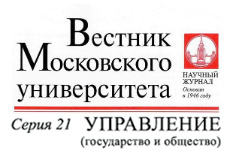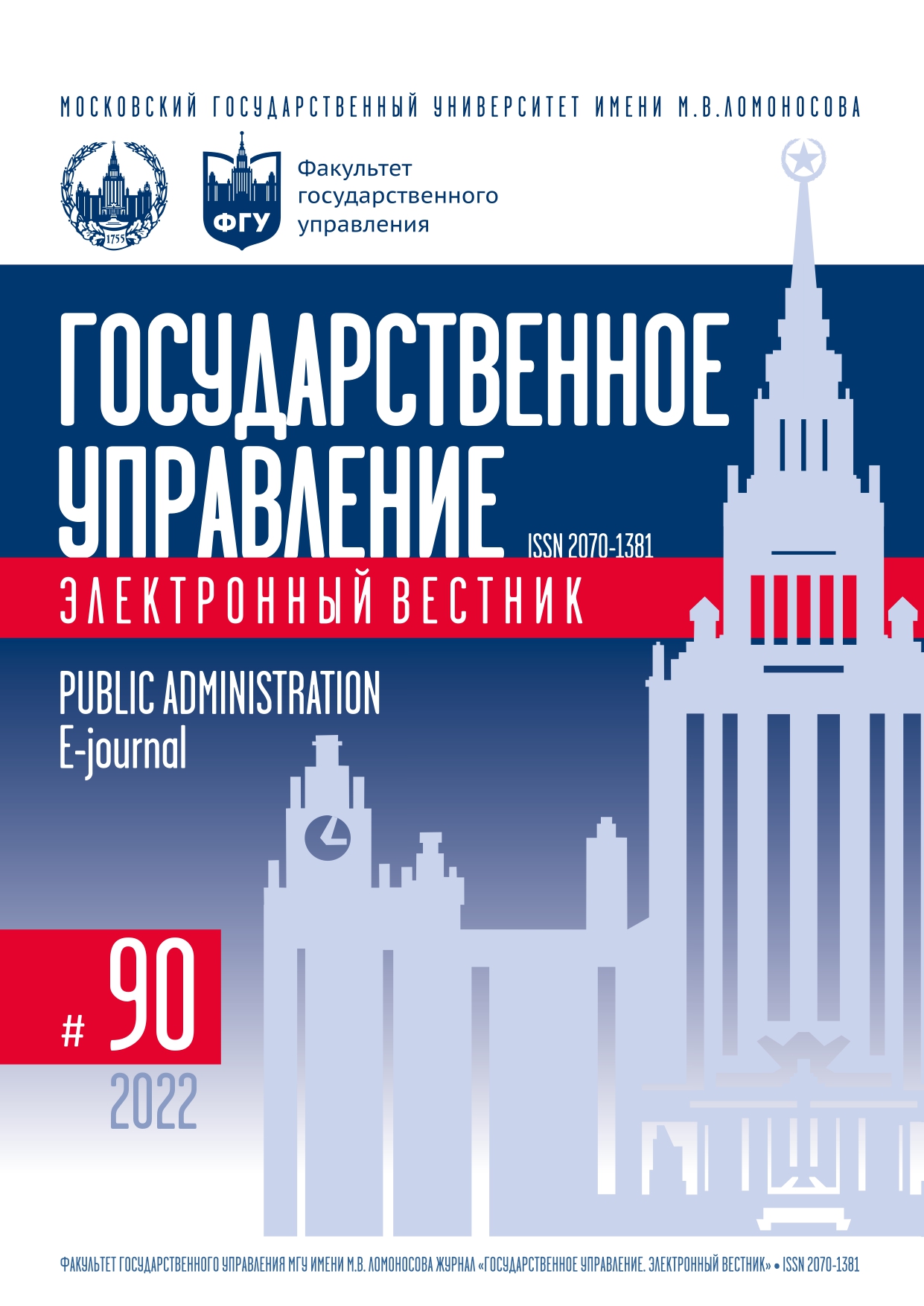Youth Protest Activity: Comparative Age Groups Analysis
Keywords:
Protest, protest activity, age, youth, age group, differentiated approachAbstract
The problem of involving young people in various forms of civic and political activity is one of the most discussed topics in science. As a part of studying non-institutional forms of participation and protest activity, the authors compare various groups of young people and their value dispositions. The article analyzes the preferred forms of participation in the political life of various age groups of young people. The purpose of the article is to identify specific features in the repertoires of the protest participation of various age groups of young people, their readiness for protest activity, as well as channels for forming the opinion of young people. The article is based on the all-Russian study results of the Russian youth’s protest activity, conducted in July 2021 by the authors. 2302 respondents aged 14 to 35 were interviewed using the questionnaire method in all federal districts of the Russian Federation. In addition, a focus group was held with university students. As a result of the study, factors and conditions for the growth of protest activity among the youth have been identified. It has been established that young people under the age of 21 have the greatest mobilization potential for protest activity, while other age groups share protest beliefs and their participation largely depends on the formulation of the reason for the protest, as well as the organizers of the actions. The main driver of the protest moods growth is destabilization of the socio-economic and political situation, the presence of systemic problems (corruption, social inequality). Under the conditions of the power transit, a situational increase in protest activity may occur, the risk of which, based on the results obtained, can be assessed as high.
References
Киричек А.И. Исследовательские социолого-политологические подходы к молодежной проблематике // Социодинамика. 2012. № 1. С. 124–136. DOI: 10.7256/2306-0158.2012.1.22.
Павловский В.В. Социология молодежи и ювенология // Социологические исследования. 1999. № 5. С. 46–52.
Amnå E., Ekman J. Standby Citizens: Diverse Faces of Political Passivity // European Political Science Review. 2014. Vol. 6. Is. 2. P. 261–281. DOI: https://doi.org/10.1017/S175577391300009X.
Dalton R.J. The Participation Gap: Social Status and Political Inequality. Oxford: Oxford University Press, 2017. DOI: https://doi.org/10.1093/oso/9780198733607.001.0001.
De Vydt M., Ketelaars P. Linking Consensus to Action: Does Frame Alignment amongst Sympathizers Lead to Protest Participation? // Social Movement Studies. 2021. Vol. 20. Is. 4. P. 439–458. DOI: 10.1080/14742837.2020.1770071.
Kahne J., Crow D., Lee N-J. Different Pedagogy, Different Politics: High School Learning Opportunities and Youth Political Engagement // Political Psychology. 2013. Vol. 34. Is. 3. P. 419–441. DOI: https://doi.org/10.1111/j.1467-9221.2012.00936.x.
Ketelaars P., Walgrave S., Wouters R. Protesters on Message? Explaining Demonstrators’ Differential Degrees of Frame Alignment // Social Movement Studies. 2017. Vol. 16. Is. 3. P. 340–354. DOI: https://doi.org/10.1080/14742837.2017.1280387.
Kim J. Why Do People Take to the Streets? Understanding the Multidimensional Motivations of Protesting Publics // Public Relations Review. 2018. Vol. 44. Is. 4. P. 501–513. DOI: https://doi.org/10.1016/j.pubrev.2018.05.002.
Loader B.D., Vromen A., Xenos M.A. The Networked Young Citizen: Social Media, Political Participation and Civic Engagement // Information, Communication & Society. 2014. Vol. 17. Is. 2. P. 143–150. DOI: https://doi.org/10.1080/1369118X.2013.871571.
Sloam J., Henn M. Youthquake 2017: The Rise of Young Cosmopolitans in Britain. Cham, Switzerland: Palgrave Macmillan, 2019. DOI: https://doi.org/10.1007/978-3-319-97469-9.
Downloads
Published
Similar Articles
- Lidiya S. Leontieva, Marianna V. Kudina, Aleksandr S. Voronov, Revealing a Degree of Digital Environment Influence on Socio-Political Activity of Young People , Public Administration. E-journal (Russia): No. 89 (2021)
- Antonina V. Selezneva, Viktotia Ye. Zinenko, Youth Political Leadership in Institutional Dimension: Shaping Environment andDevelopment Features , Public Administration. E-journal (Russia): No. 87 (2021)
- Zoya R. Vysotskaya, Actualization of Identities among the Youth. Part 1: Problem Statement and Research Methodology , Public Administration. E-journal (Russia): No. 86 (2021)
- Dinara D. Tulegenova, Patriotism in the Views of Russian Youth: A Political and Psychological Analysis , Public Administration. E-journal (Russia): No. 108 (2025)
- Denis S. Andreyuk, Arina S. Livitina, Nikita S. Sushko, Semantic Analysis of Group Values Structure Using Roget Thesaurus: Automated Algorithm , Public Administration. E-journal (Russia): No. 91 (2022)
- Nikolai S. Skipin, Plot-Ideological Approach to Values Study: Model and Results , Public Administration. E-journal (Russia): No. 91 (2022)
- Yuriy Yu. Petrunin, Collisions of Methodology and Epistemology in Data Science , Public Administration. E-journal (Russia): No. 107 (2024)
- Pavel A. Mikhnenko, National Goals and Institutional Transformations: Model of Strategic Development , Public Administration. E-journal (Russia): No. 85 (2021)
- Maria V. Pevnaya, Oksana N. Haurylik, Darya V. Minchenko, Legislative Discourse of State Support for Youth Social Initiatives in Russian Federation and Republic of Belarus , Public Administration. E-journal (Russia): No. 105 (2024)
- Antonina V. Selezneva, Azamat Kh. Tomaev, Alexandra A. Khatkevich, Youth Political Leadership in Institutional Dimension: Shaping Environment and Development Features , Public Administration. E-journal (Russia): No. 98 (2023)
You may also start an advanced similarity search for this article.




